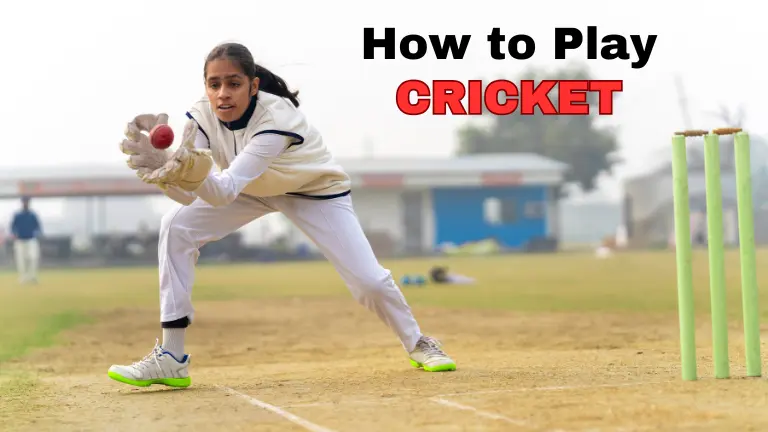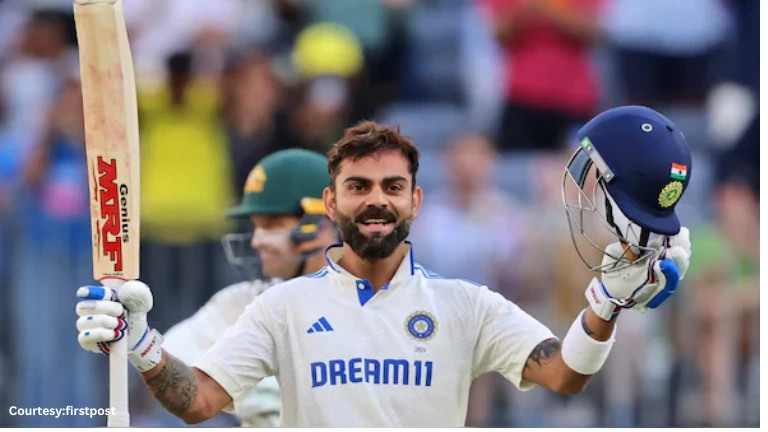Cricket is more than just a sport it’s a tradition, a celebration, and a unifying force in many parts of the world. Whether you’re watching a thrilling India vs Pakistan match or playing with friends in your backyard, cricket offers excitement at every level. If you’ve ever asked yourself how to play cricket, this article will walk you through the basics in the most beginner friendly way.
Cricket Full Guide for Beginners
What Is Cricket?
Cricket is a bat-and-ball game played between two teams of 11 players each. One team bats while the other bowls and fields. The goal of the batting side is to score runs, while the bowling side tries to get the batsmen out and limit their score.
The game is played on a large oval field, with a rectangular 22-yard pitch at the center. A game of cricket can last from a few hours to five full days, depending on the format. But don’t worry we’ll break it all down for you.
Basic Cricket Equipment List
Before you can start playing, you’ll need some essential gear. Here’s a quick basic cricket equipment list every beginner should know:
- Cricket Bat – Used by the batsman to hit the ball.
- Cricket Ball – Hard and made of leather; can be red or white.
- Wickets – Three wooden stumps with two bails placed on top at each end of the pitch.
- Batting Pads and Gloves – For leg and hand protection.
- Helmet and Abdominal Guard – Crucial safety gear for the batsman.
- Cricket Shoes – Usually with spikes to provide grip while running or bowling.
Having the right equipment ensures both safety and performance on the field.
Cricket Rules for Beginners
Learning the cricket rules for beginners may seem tricky at first, but it’s actually simple once you understand the flow of the game.
Each team takes turns batting and fielding. The batting team sends in two players at a time, and their goal is to score runs. The fielding team has a bowler and 10 fielders who try to get the batsmen out and stop them from scoring.
An “innings” ends when 10 batsmen are out, or the allotted overs are completed. Then the teams switch roles. The team with the most runs at the end of the match wins.
How to Score Runs in Cricket
If you’re wondering how to score runs in cricket, it all comes down to teamwork and timing.
A run is scored when both batsmen run to each other’s side of the pitch after the striker hits the ball. If the ball hits the boundary rope after bouncing, it counts as 4 runs. If it clears the boundary without touching the ground, it’s a 6 the most exciting play in cricket!
Runs can also be scored through extras like wides (bad balls by the bowler), no-balls, leg byes, and byes.
- Highest Score in ODI Cricket – Top Individual Records, Team Totals, and Historic Innings
- Narendra Modi Stadium Pitch Report: Batters’ Paradise or Bowlers’ Battlefield?
- How Does It Feel to Watch Cricket in a Stadium?
- M. A. Chidambaram Stadium, Chennai – History, Capacity, Records & Complete Guide
- Wankhede Stadium, Mumbai History, Capacity, Records & Iconic Matches
How a Batsman Can Get Out
There are several ways a batsman can be dismissed:
- Bowled – When the ball hits the stumps.
- Caught – Fielder catches the ball in the air after it’s hit.
- Run Out – A fielder hits the stumps with the ball before the batsman completes a run.
- LBW (Leg Before Wicket) – Ball hits the batsman’s pad when it would have hit the stumps.
- Stumped – Wicketkeeper removes the bails when the batsman is out of his crease.
Once a batsman is out, he is replaced by the next teammate until the inning ends.
Fielding Positions in Cricket
Understanding fielding positions in cricket helps you know where everyone stands and why.
- Wicketkeeper – Stands behind the stumps to catch balls and make stumpings.
- Slip Fielders – Stand next to the keeper to catch edged balls.
- Point and Cover – Positioned on the off-side to stop square shots.
- Mid-on and Mid-off – Close to the bowler, used to stop straight drives.
- Fine Leg and Third Man – Near the boundary to catch or stop balls behind the batsman.
Each fielder plays a strategic role in stopping runs and catching the batsman off guard.
Types of Cricket Matches
There are several types of cricket matches, each with its own time format and rules:
- Test Matches Played over five days with two innings per team.
- One Day Internationals (ODIs) – 50 overs per team, finished in a single day.
- T20 Matches – Each team gets 20 overs, often played under lights for fast action.
- Domestic Matches – Played within countries, like Ranji Trophy or County Cricket.
- Street Cricket/Tennis Ball Cricket – Informal, fun matches with simplified rules.
Beginners usually start with shorter matches like T20s or tennis ball cricket for quick learning.
How to Bat and Bowl
Batting Basics:
As a batsman, your job is to score runs while protecting your wicket.
- Stand sideways with your eyes on the ball.
- Keep your bat grounded and be ready to play forward or backward.
- Learn shots like the straight drive, pull, cut, and leg glance.
- Timing is key don’t rely just on power.
Bowling Basics:
The bowler tries to dismiss the batsman and restrict scoring.
- Deliver the ball with a straight arm.
- Practice line (direction) and length (where it lands).
- Try different types: fast bowling, swing bowling, spin bowling.
- Stay consistent and work on rhythm and accuracy.
Beginner Tips to Play Cricket
Looking for beginner tips to play cricket more effectively? Start with these:
- Practice Regularly – Whether it’s batting, bowling, or fielding.
- Watch the Pros – Learn techniques from international players.
- Understand the Game – Study fielding positions, game formats, and match situations.
- Stay Fit – Cricket requires stamina, speed, and agility.
- Play in Teams – Teamwork improves coordination and builds cricket IQ.
Cricket isn’t just about talent it’s about focus, patience, and learning from experience.
Final Thoughts
So, now you know how to play cricket! It might feel overwhelming in the beginning, but with regular practice and a passion for the game, you’ll be amazed at how quickly you can improve. Whether you dream of becoming a pro or just want to enjoy the game with friends, cricket offers fun, challenge, and a sense of community.
Just pick up a bat, join your friends, and get on the pitch. Who knows you might be the next cricket star in the making!


